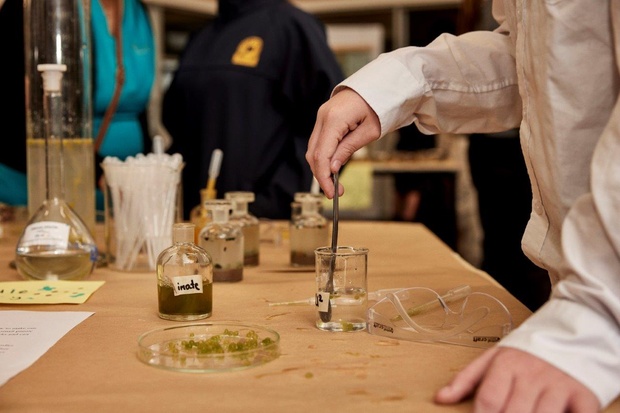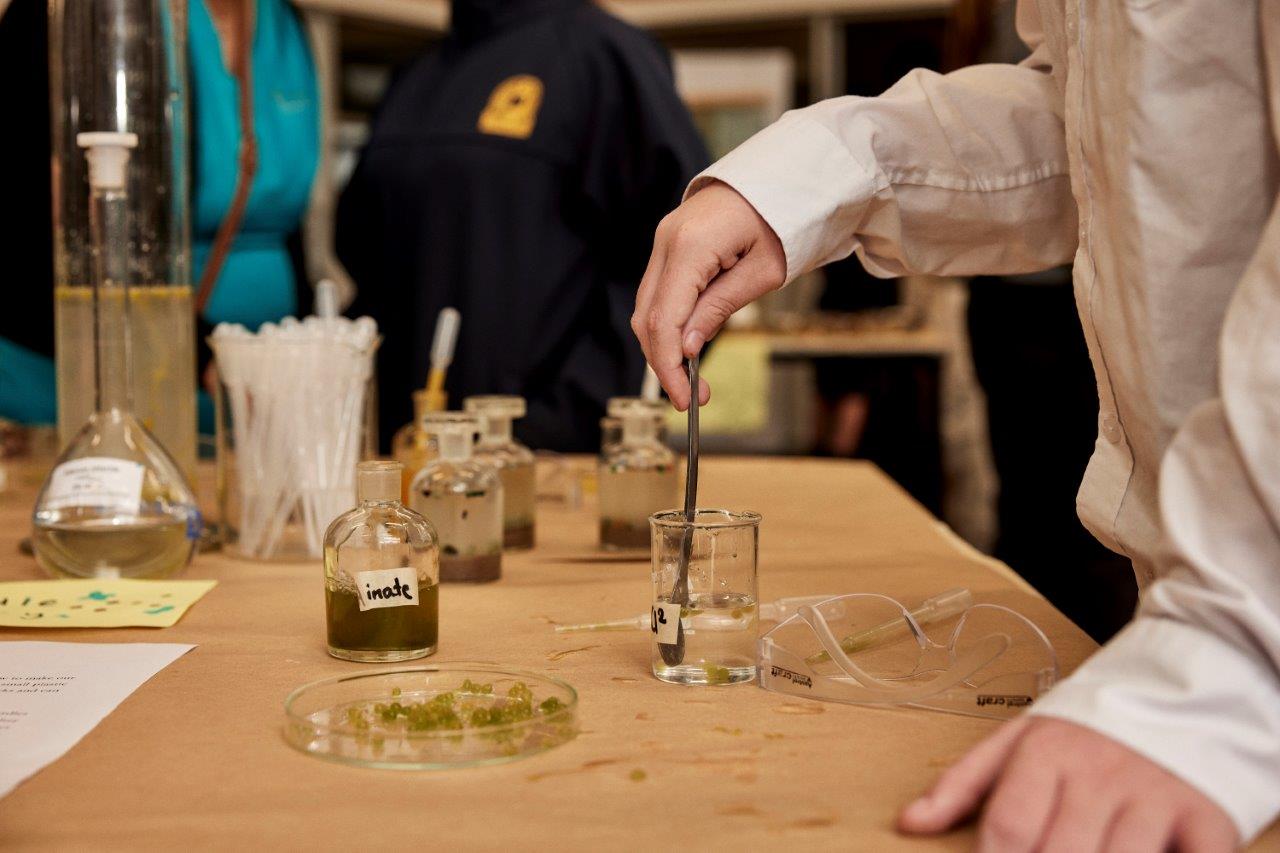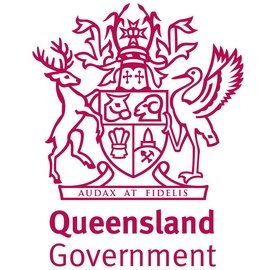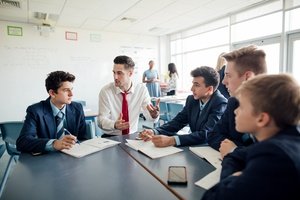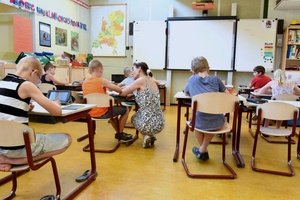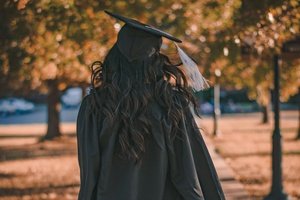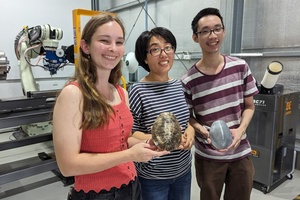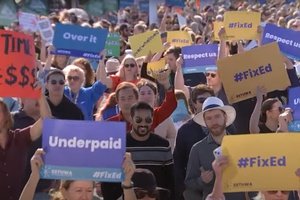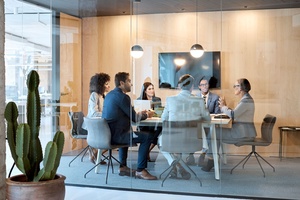Both new to Frankston High School in Melbourne’s south, Ward, a visual art teacher and Edwards, who teaches STEM, were sitting in the staffroom talking about the possibilities and the connections, both between art and science and the future of their learning areas in terms of the footprint that they’re leaving, and how they could actually educate students to help solve the problems of the future.
They soon hit on bioplastics. Bioplastics are materials produced from renewable biomass sources, such as vegetable fats and oils, corn starch, straw, woodchips, sawdust, recycled food waste and more.
So, what about teaching their students about them and how they might be used to create recyclable artwork?
As members of the Victorian Academy of Teaching and Leadership, the pair decided to apply for a Teaching Innovation Fellowship (which they duly landed). The Fellowship provides a unique and dedicated pathway for teachers to develop their expertise and capacity to be agents of change in school system improvement through applied and self-directed professional learning.
“...we could have done it individually, without each other, but we just thought this would be the perfect opportunity to collaborate on something we were both passionate about,” Edwards says.
The brainstorming soon evolved into a cross-curricular elective they called 'Biostudio'.
Having honed the idea and gained the funding go-ahead, the pair set about gathering a group of (hopefully) willing young participants.
“It was sporadic to start with, because we had so many variables to work with – we had school calendars, we had camps, we had classes that we couldn’t access, separate periods, our own classes, Year 12s – and so it was a really fine balance of working with all of the stakeholders and everyone involved, but also, knowing that intense and short isn’t actually often the way and that it needed to be spaced out over some period of time," Ward says.
“It started with the first session in September and we had the culmination and the exhibition at the end of November.”
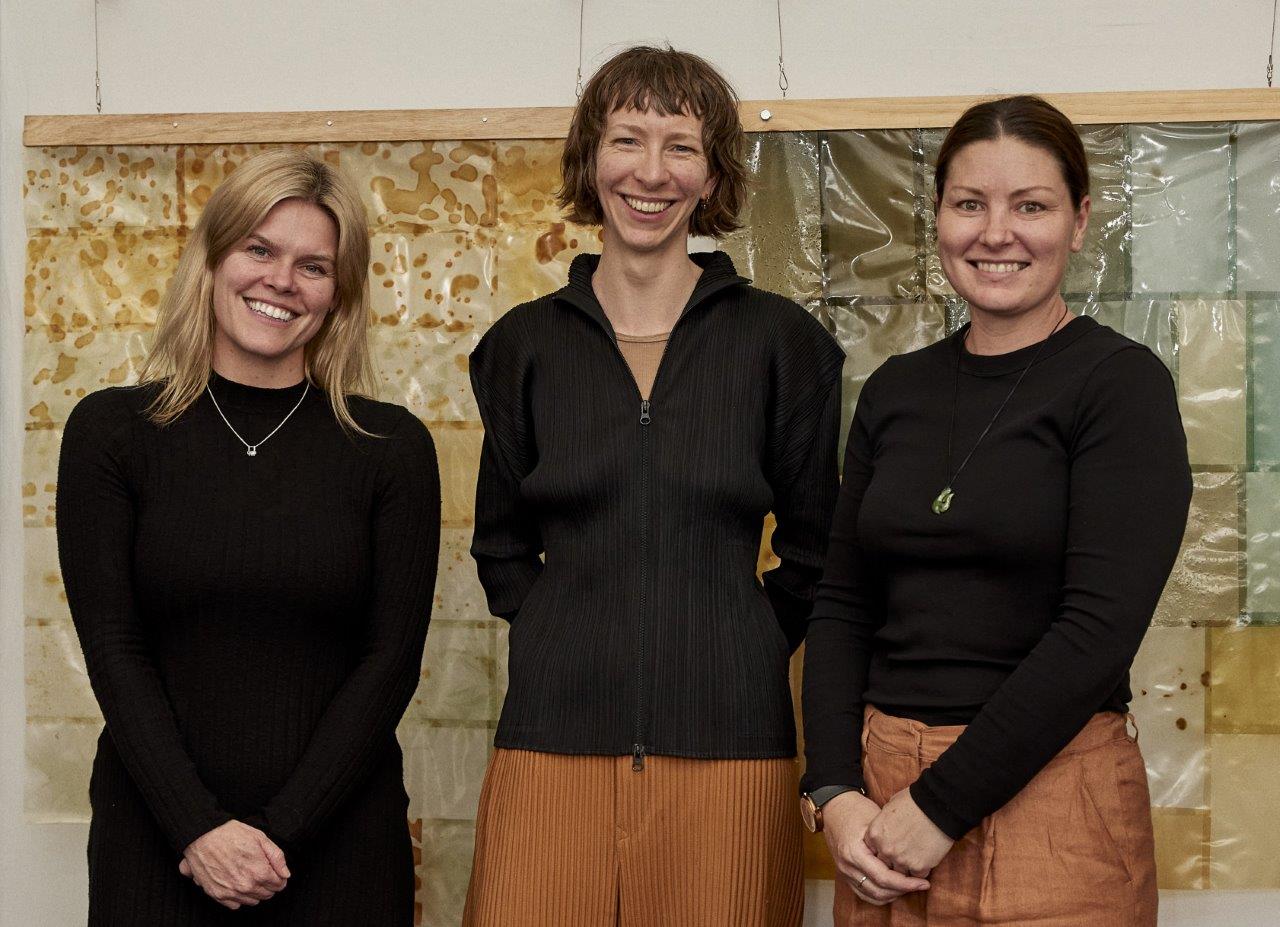
Birra-li Ward, above left, and Sarah Edwards, above right, have taught Year 7 and 8 students at Frankston High how to produce bioplastics art, as part of a cross-curricular elective called ‘Biostudio’. Professional artist Jessie French, above middle, has helped the pair as a guest expert.
In order to receive the funding as part of their fellowship, an accountability component involved the collection of data on the students pre-, during and then post the project.
While the group of students were madly enthusiastic to do the subject, the pair needed to establish what they knew about the UN’s 17 Sustainable Development goals.
“One of the things that we were collecting was around, ‘how much did the students understand about the goals? What was their awareness about the goals?’ and it was quite shocking to see how few knew about the goals at all. And among those who were able to identify the goals, how little they actually knew about them," Ward says.
“Part of what we felt was that, the kids, yes, maybe they can do a unit, they can do a project, but where’s that deeper understanding of being able to connect?
“And that’s what we managed to do, was to connect the global to the local and the reality of the problem."
“And,” Edwards adds, “that the problem is actually in their backyard as well.”
Importantly, as well as being cross-curricular, the project was across year levels as well, involving both Year 7 and 8s rather than just one cohort, Ward says.
“So for our data and to see whether what we had done was working, their engagement or care factor of art and science and vice versa, we tried to get a diverse range of students, not just those who were interested in both subjects, so there were certainly some students who were honest and didn’t like art.”
Some parts of the sessions would involve data collection, and some would be about creating art journals and making the plastics.
“…so it was very much entwined together,” Ward says.
“We also worked with external parties as well, so when we went to the beach, we worked with St Kilda Eco Centre and they helped us run some of the activities at the beach."
Students at Frankston High School are using bioplastics to create sustainable artwork, thanks to Teaching Innovation Fellows, Birra-li Ward and Sarah Edwards. Congrats to these incredible teachers and students!
— Victorian Academy of Teaching and Leadership (@AcademyVIC) February 9, 2024
Read more @abcnews: https://t.co/Ul5zE6MgN5
The elective harnessed the many learning opportunities and sustainability applications of using bioplastics, which, in this case, are produced out of a powder that is extracted from seaweed, water and glycerin.
“So really, all you’re doing is heating it up and mixing it into what looks like a glue,” Edwards says.
“We then get the students to add a natural pigment that they create themselves, so for example beetroot or tumeric, paprika, charcoal –whatever they want to give colour to their bioplastic, and then we track how it changes in colour as well.”
Pieces ranged from large collage-like hangings to small dishes created using hole-punches, newly acquired sewing skills and the dexterously difficult ‘saddle stitching’ technique.
The results of the students’ efforts are recorded, photographed and then students can choose one piece to keep. Later their remaining works are melted down to either be used by that student again or by future students.
Everything has been shared collaboratively between the pair, who say they've loved working on the project together.

On the beach: students in the elective collected data at the local beach and enjoyed activities with the St Kilda Eco Centre.
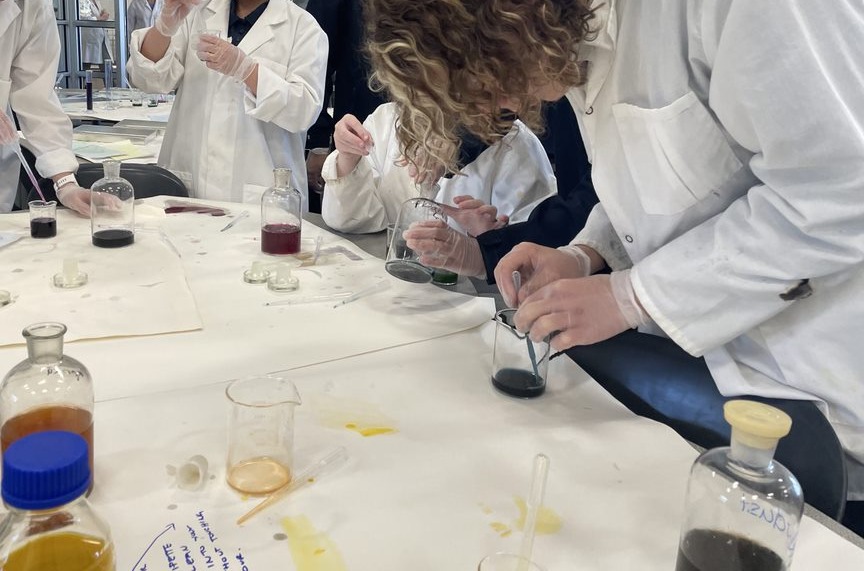
Back at school: students got to work mixing the colours into their bioplastics and preparing to produce their artwork.
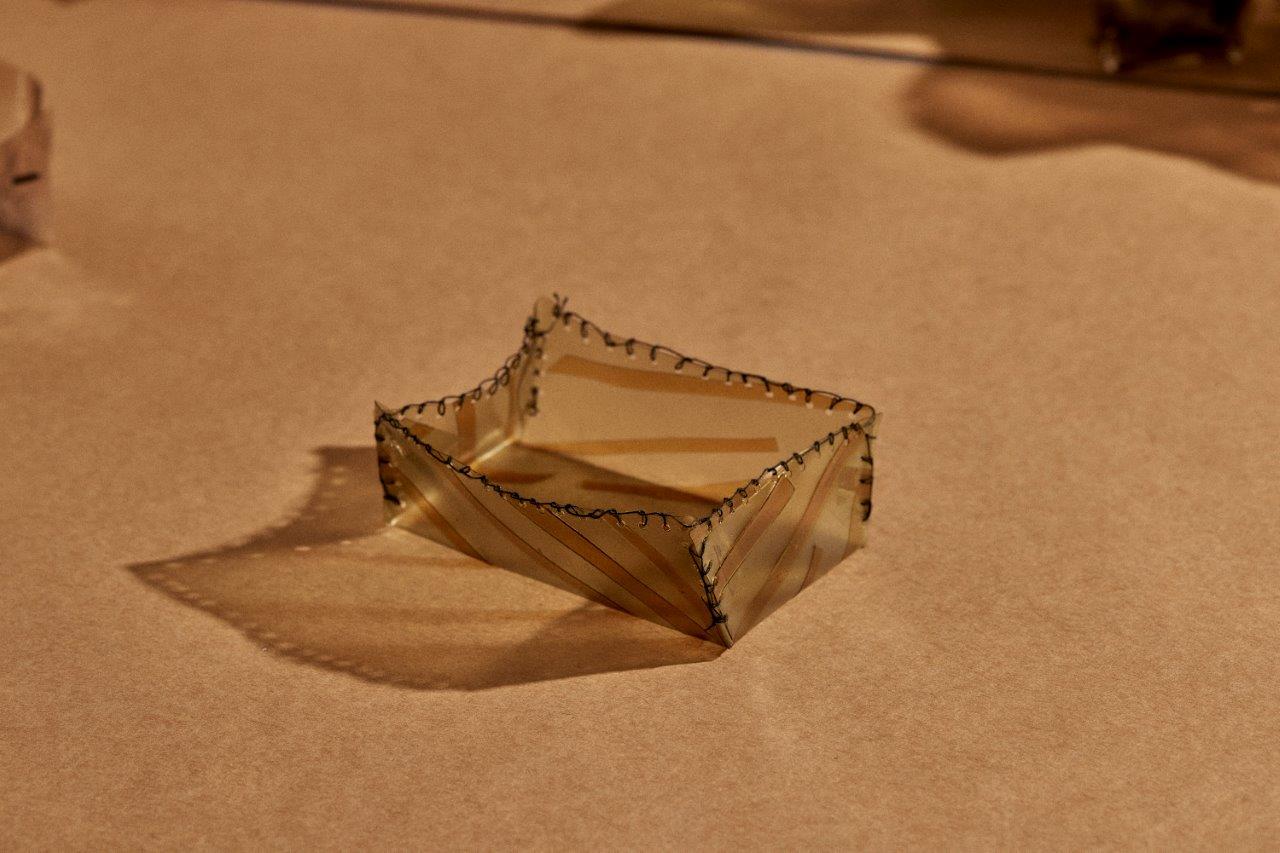
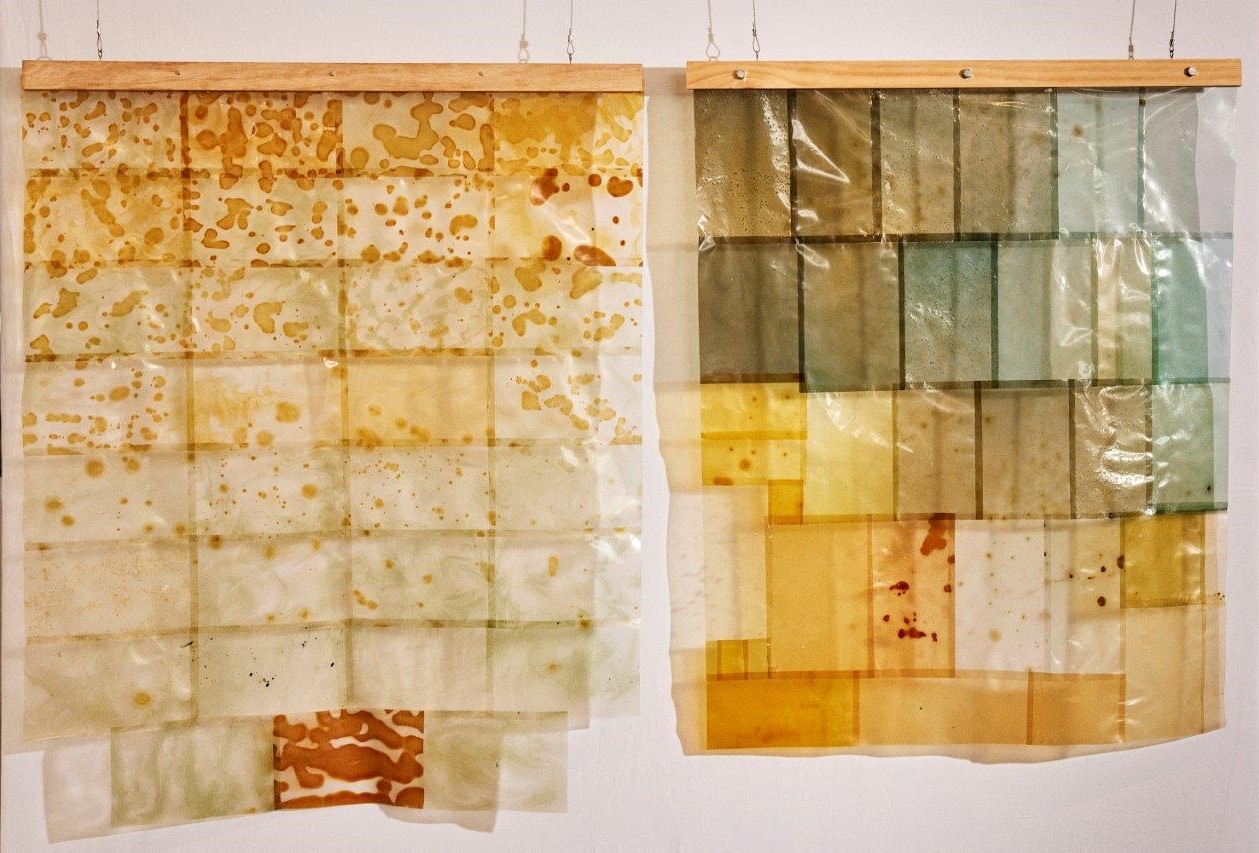
The fruits of their labours: The students produced a range of art pieces, including stiched dishes and collages. PHOTOS: Michael Pham
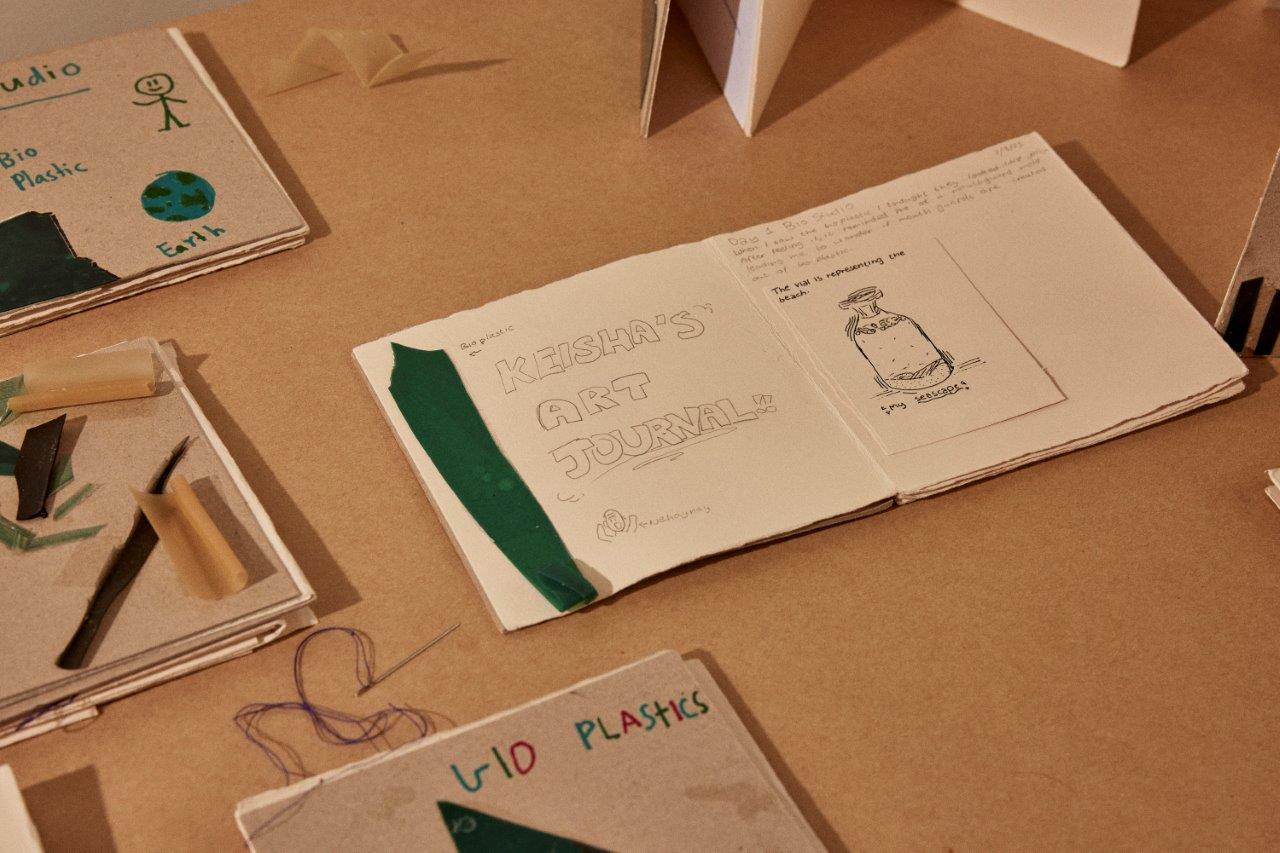
Recording the journey: The students’ art journals provided an in-depth record of all they had learned in the process. PHOTO: Michael Pham
Part of the elective also included guest assistance from two working artists who shared their expertise and wisdom with the students.
Local bioplastics artist Jessie French, who creates large-scale pieces from her studio in Melbourne, joined the students in person for a session on techniques, sharing with the Frankston kids valuable insight into the novel creative artform, and providing a living, breathing example of the possibility of pursuing a career as an artist.
Mary Mattingly is a New York City-based visual artist whose arts practice focuses on sustainability and looking at problems of the future.
“She actually exhibited in the United Nations headquarters early last year,” Ward says.
“She did a Zoom call with the students and talked about her passion for the environment and using your art as a form of advocacy in more of a science space – so, if you were to look at her work, you can see the science lens moreso than it being about aesthetics and beauty."
Ward says it was a great chance to open the kids’ minds to what an artwork can look like away from simple still life, and the purpose of art, and its role.
The project has proved such a success last year, that Edwards is running it as a middle school STEM class this year, with two 45-minute lessons, and a 1.5 hour lab session.
“We’re aiming towards that becoming a STEAM group,” Edwards says.
“I was a little bit worried that the students this year, when they chose the STEM elective, that they might not have quite the buy-in to the subject, that the passionate kids from last year had. But they’re really enjoying it, they’re all saying how engaging and fun it is and they’re responding in the discussions. And, yeah, they’re excited to come to lessons.”
While Ward is pausing this year and looking at bringing more sustainability into art and ways that STEM can create materials that she can use in her visual art classes, for Edwards it’s full STEAM ahead.
“So it’s now basically a term-long program involving Year 9s and 10s this year, and the aim is that it will become an actual subject next year,” she says proudly.
As for the initial ‘Biostudio’ group, their enthusiasm and passion has left a lasting impression on the pair.
“They grew into a little community,” Ward says.
“I think sometimes it’s not just about creating learning opportunities, but also learning about how to communicate, learning how to collaborate, it’s those transferable skills that we always talk about.
“What I learned is how important they are. Where do we create these opportunities with authenticity?”

